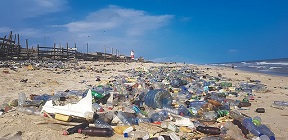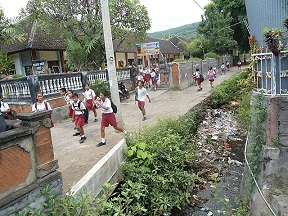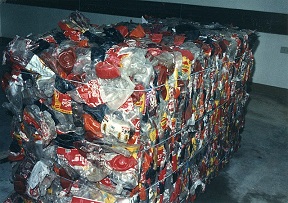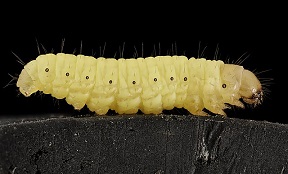The invaluable Knowable Magazine recently ran an article by Sandy Ong on plastic eating microorganisms. They might be the solution to a problem that looms for long already but hasn’t been solved so far: the growing pile of plastic waste. The world is addicted to plastic. We know we should find a solution for plastic waste, but that doesn’t stop us from producing more and more of it. What do we need to end this problem?
The search for plastic eating microorganisms
Most plastics that we produce do not break down easily. That’s precisely why we produce them. These plastic jars, cans, bags, this packaging material, it comes in so handy that we can hardly imagine a world without them. But like with many global problems: the benefits accrue mainly to the richer countries, the costs mainly to the poorer ones. Rivers in Java are jammed with plastic waste, on plains in Eastern Africa the wind freely blows around plastic bags, the gyres in the Pacific Ocean contain the remnants of our consumption society. Most readers of this text will not experience the downside of plastics, but that doesn’t mean it isn’t there.
The world still produces more plastics each year, whereas most countries do not have proper solutions for the waste phase. A reasonable estimate of the actual production volume is close to 460 million tons annually. Such large numbers are almost meaningless. But Knowable Magazine offers a comparison: it is roughly equal to the weight of 2.3 million blue whales. And this is a one-way street. The plastic isn’t being returned to the producer. At most 10% of all plastics produced are collected after use. The smartest solution we came up with so far is burning the waste. But most plastics are buried in landfills or dumped in the environment. Therefore, we find plastic in every corner of our planet. As Knowable Magazine writes: ‘It’s no wonder that plastic has penetrated every corner of our planet — from the deep oceans to both poles, it even comes down in the rain. It’s also in our bodies, with traces reported in placentas, breast milk and human blood; the use and disposal of plastics has been linked with several health and environmental issues.’ Nevertheless, plastics remain very popular. They are lightweight and easy to shape. Their production volume is expected to double by 2050.
Worms eating plastic
We need to search solutions for the plastic problem in two directions. Improve recycling (and recyclability). And improve our capability to break down plastics that seemed permanent so far. Even though the latter course of action may mean that the very reason why we produce plastics – their permanence – may be undermined.
Knowable Magazine recounts a story in the search for plastic eating microorganisms. It happened when in 2012, beekeeper and researcher Federica Bertocchini found holes in the plastic bags in which she stored worms that plagued her honeybees. In other words, these worms could eat plastic! Her search for this remarkable phenomenon led her to co-found the company Plasticentropy. One of the many recent companies that look for bio-inspired means to break down plastics; the very materials that we used to look upon as non-degradable.
New activity
The very landscape of plastic breakdown technology has changed a lot over the past ten years. Scientists are now looking everywhere, especially in filthy places with much waste, for plastic eating microorganisms. They take them to their labs and try to enhance their plastic-eating ability. In doing so, they hope to reclaim the plastic’s building blocks. They can used these to make new plastics; in doing so they would create an infinite recycling loop. But let’s say it is early days for such a development yet.
The trick here is to find the enzymes in the microorganisms in the worms that break down the plastic to its monomers. If the scientists would find these, this would put the art of plastics production on its head. Plastics could become a valuable resource instead of just a source of waste. The search for such enzymes goes back to the 1970s, when a group of Japanese scientists led by microbiologist Kohei Oda found a microbe that could break down PET. A plastic produced in major quantities for use in beverage bottles and fibres.
Plastic eating microorganisms in waste
The scientists found such plastic eating microorganisms in waste just outside a PET producing company. And waste is still the major source of such microorganisms. They are found, so Knowable Magazine tells us, in a compost heap at a cemetery in Leipzig, Germany; in a waste disposal site in Pakistan’s capital, Islamabad; and in weathered debris washed up on two beaches in Chania, Greece. There is a major potential in this field. In 2021, a team reported that they identified some 30,000 different enzymes with plastic-degrading potential.
But identifying such enzymes is just the start of the process. Most naturally occurring enzymes need to be tweaked in order to step up their performance; in order to arrive at a commercially interesting breakdown speed. For instance, commercial plastic eating microorganisms need to be able to withstand higher temperatures – which speed up the process.
PET
Some plastics are easier to break down than others. The popular PET plastic – much used in beverage bottles – can be broken down fairly easily. Because of the oxygen bonds that are essential for this plastic. Plastic eating microorganisms can relatively easily target the carbon-oxygen bonds. This breakdown comes on top of the amount of PET returned through a deposit scheme. The first commercial plant targeting PET biological recycling is the Australia-based Samsara Eco, a firm that plans to launch a facility in 2024. And the French firm Carbios plans to open up a bio-recycling plant in 2025.
Carbon-nitrogen bonds are also a popular target for biological recycling. Bonds that are characteristic for polyamides, polyurethanes and nylons. No plans for commercial factories have been announced so far. Biological recycling is a bit more difficult in this field. There are many nitrogen-containing plastics around, and the chance that we will find a one-size-fits-all solution for them is dim. So, the search is for tailor-made solutions.
More difficult plastics
Still more difficult will be the task of finding plastic eating microorganisms when it comes to the most popular plastics; plastics that contain only carbon-carbon bonds. Like polyethylene (PE), polypropylene (PP) and polystyrene (PS). There isn’t much of a point of action in these plastics. PE by itself poses a major problem. It accounts for more than 25 percent of the market. So, it was quite a discovery that Federica Bertocchini made in 2012. She and her team identified the plastic-degrading enzymes in wax worm saliva. They degrade polyethylene within a matter of hours at room temperature by introducing oxygen into the carbon backbone.
Enzymes found in insect larvae also play the main role in breaking down that other difficult plastic, PS. Microbiologist Chris Rinke at the University of Queensland in Australia works on polystyrene. He works with beetle larvae that he calls Superworms. They chew through PS material and divide it into smaller parts, introducing oxygen in the process. Then the plastic eating microorganisms in their guts come into play. Even if Rinke hasn’t yet identified them.
PVC
And then, there are the hardest plastics to break down like polyvinyl chloride (PVC). Do we want to break it down at all? Precisely because it is so permanent, the material is commonly used in objects supposed to last ‘forever’ like sewage pipes. We do want these to be permanent, don’t we? Even though we are miles away from commercially developing a plastic eating microorganism that would tackle PVC, we need to ask this. Some scientists doubt if we will ever get there. Like Andy Pickford, a molecular biophysicist at the University of Portsmouth in the United Kingdom. ‘There have been some interesting observations, but converting those into an industrial process is going to be extremely difficult,’ he says. In his opinion, we might better shift toward creating new plastics that are recyclable.
Yet, scientists report the breakdown of difficult plastics like PS and PLA. At least: they found plastic eating microorganisms that can munch away at these plastics. That may be quite a result, but it is still miles away from industrial application. Says Vanessa Vongsouthi, head of protein engineering and research founder at Samsara Eco: ‘I think there’s never going to be one solution to all this. We have to work on advanced recycling, but in addition to that, policy, product redesign, reuse and even elimination… are all part of the bigger picture.’
Policy
And policy starts to play a role, be it a humble one for the time being. The United Nations work on the world’s first global plastic pollution treaty. From 2024 onwards, it will set rules that should make recycling easier. The US states of Washington and California, and the European Union, prepare for a requirement that as of 2025, 25 percent of all material in plastic containers and beverage bottles be recycled plastic.
Still, this is a humble start. As long as producing virgin plastic remains as cheap as it is today, the market will pull only one way: towards a once-through system. So, even though plastic eating microorganisms point towards a possible solution, the world needs to be convinced that there is a major problem here. A problem that needs to be solved. There is no easy way out.
Author
Diederik van der Hoeven
Source
Supplier
CARBIOS
European Union
Plasticentropy
Samsara Eco
United Nations (UN)
University of Portsmouth
University of Queensland
Share
Renewable Carbon News – Daily Newsletter
Subscribe to our daily email newsletter – the world's leading newsletter on renewable materials and chemicals

















